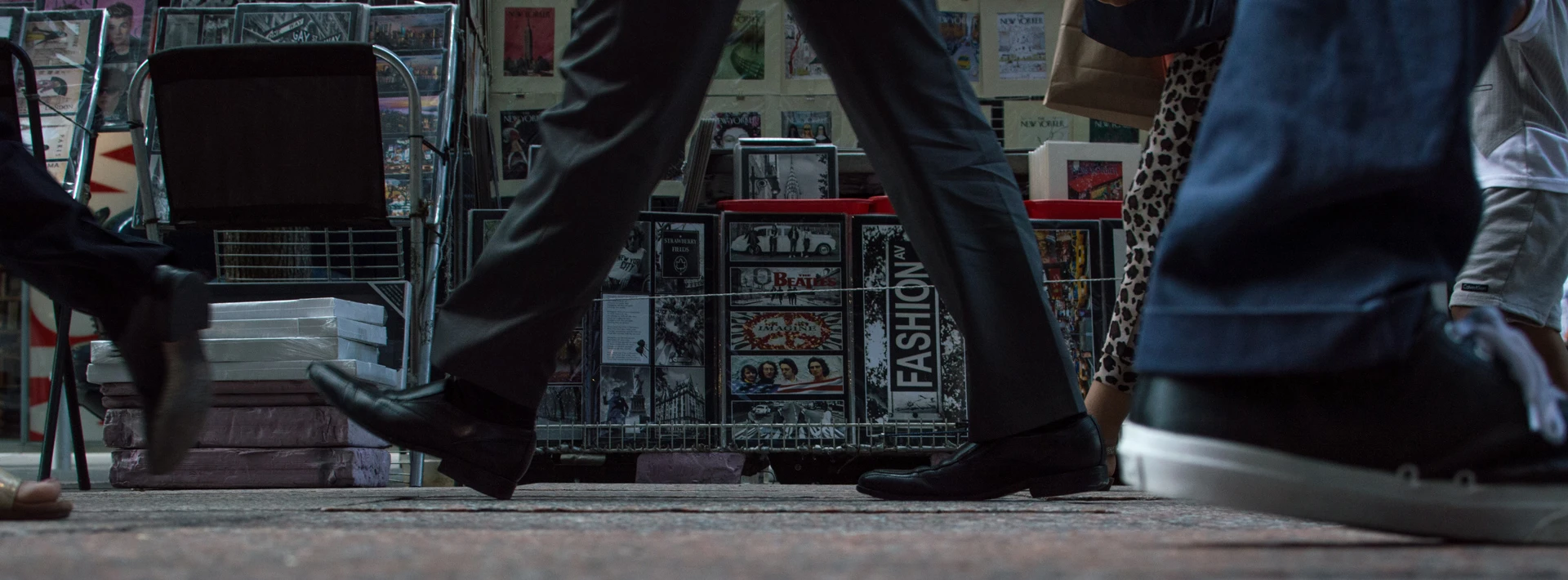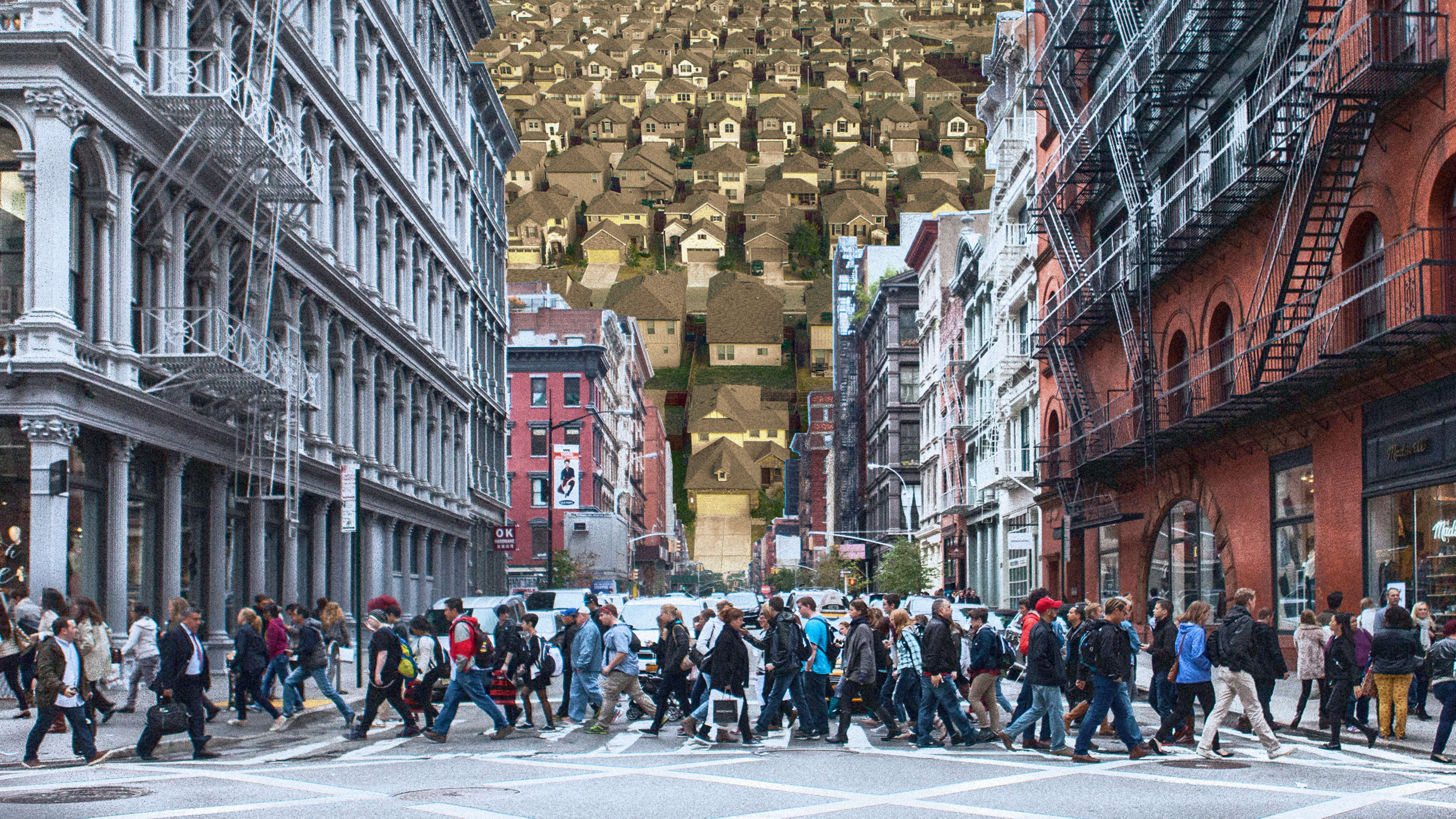The Boston metro area may be the first region in America to claim that it’s put an end to sprawl.
“There’s no leasing activity happening in the drivable suburbs,” says Tracy Hadden Loh, senior data scientists at the George Washington University School for Businesses’ Center for Real Estate and Urban Analysis. “All of the new demand for retail, office, and multifamily rental space is going to walkable, urban places.”
Those walkable, urban places, Loh adds, are not just located in downtown Boston. Adjacent cities, like Cambridge and Somerville, are well connected by transit and contain dense housing options, near shops and amenities, that people want to live in. Looking at the Boston metro area, Loh says, provides a window into what could be the landscape of America in the future: networks of dense, urbanized communities built out around core cities, and connected by non-car transit options like light rail, buses, and bike infrastructure.

This trend is not just limited to Boston. A new report from GWU and Smart Growth America (Loh is a co-author) finds that on the whole, America is falling out of love with the suburbs. It’s not the location of these places that is the issue, Loh and her co-authors find, but rather their design: sprawling communities of single-family homes that require a car to navigate are not what’s drawing people anymore. What’s popular now are places where people can live in mixed-use, multifamily housing—maybe an apartment building above a coffee shop—and walk, bike, or take transit to get around.
Foot Traffic Ahead: Ranking Walkable Urbanism in America’s Largest Metros counts 761 such communities throughout the 30 biggest metro areas in the U.S. In total, these mixed-use, walkable areas comprise less than 1% of the total land mass in the metro areas, but they delivery disproportionately significant economic benefits. While sprawling, suburban districts have added no new development and in some cases, lost occupancy since 2010, nearly all new office and multifamily housing construction has clustered in these 761 areas. In today’s “knowledge economy,” companies are finding they benefit from clustering near each other and in the midst of a strong labor pool—which they’ll find in the dense, walkable communities that younger and well-educated workers are increasingly seeking out.
A well-documented negative effect of this trend is high real estate prices. But, according to Loh, that’s only creating significant problems in the U.S. because wages for ordinary workers have stayed stagnant for decades, making it difficult for them to keep pace with housing costs, and because many cities have not met the growing demand for housing in walkable communities with adequate new construction. Yet even in places like New York and San Francisco where housing costs are high for these reasons, residents often save on transportation costs because it’s not necessary to have a car to get around.
Beyond raising wages for workers so they can afford to live where they work, Loh says that metro areas need to take concerted steps to support this trend toward walkable, urban communities. One lever, she says, is doing away with single-family zoning, which prohibits building mixed-use and multifamily developments. That’s already happening in some places: Minneapolis and the whole state of Oregon have recently banned single-family zoning. Another is rolling back requirements in many places that developers must add more parking to go along with new housing or commercial structures.
But the key, Loh says, is following the example of Boston and other cities like Seattle and Denver, which are modeling the idea that density and walkability do not have to be limited to the urban core. “The cities of the future are polycentric,” Loh says. Communities that were previously considered car-centric and suburban can be densified and connected to both the urban core and each other by sustainable transit. Doing so will enable more people to live in—and afford—the urban experience and access to jobs and amenities that is keeping many people locked out of urban areas now. And while Loh notes that Foot Traffic Ahead does not delve too deeply into the environmental implications of this type of development, the benefits of moving away from a car-centric model and toward regions where everyone can walk, bike, or take transit, she says, are self-evident.
Recognize your brand’s excellence by applying to this year’s Brands That Matter Awards before the early-rate deadline, May 3.
